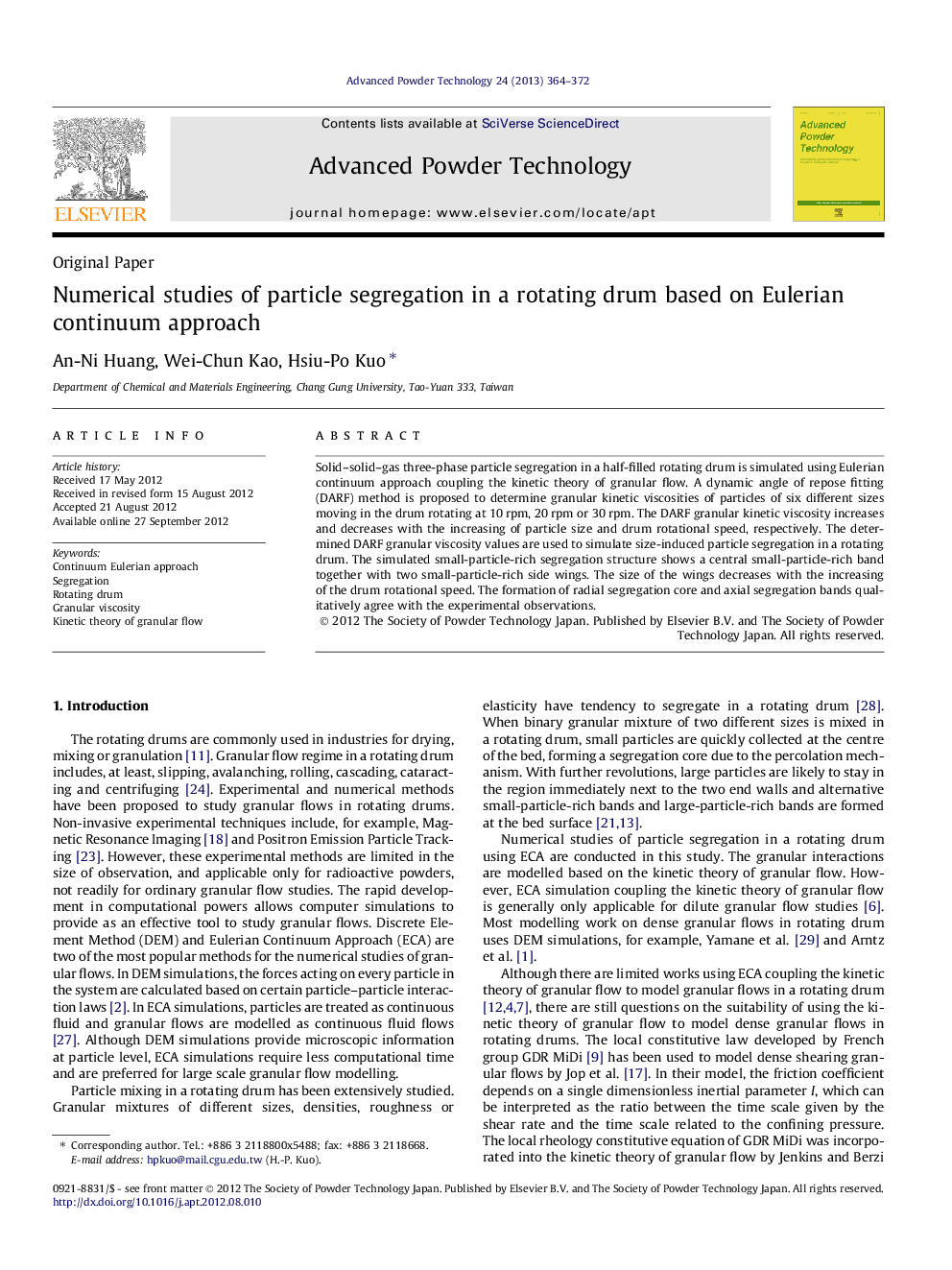| Article ID | Journal | Published Year | Pages | File Type |
|---|---|---|---|---|
| 144941 | Advanced Powder Technology | 2013 | 9 Pages |
Solid–solid–gas three-phase particle segregation in a half-filled rotating drum is simulated using Eulerian continuum approach coupling the kinetic theory of granular flow. A dynamic angle of repose fitting (DARF) method is proposed to determine granular kinetic viscosities of particles of six different sizes moving in the drum rotating at 10 rpm, 20 rpm or 30 rpm. The DARF granular kinetic viscosity increases and decreases with the increasing of particle size and drum rotational speed, respectively. The determined DARF granular viscosity values are used to simulate size-induced particle segregation in a rotating drum. The simulated small-particle-rich segregation structure shows a central small-particle-rich band together with two small-particle-rich side wings. The size of the wings decreases with the increasing of the drum rotational speed. The formation of radial segregation core and axial segregation bands qualitatively agree with the experimental observations.
Graphical abstractThe surface of the small 0.385 mm particle occupied region of the binary mixture (0.385 mm & 0.775 mm) in 20 rpm drum at t = 30 s. The colour scale indicates the solids volume fraction of the particulate phase.Figure optionsDownload full-size imageDownload as PowerPoint slideHighlights► Size-induced particle segregation in a rotating drum is simulated using CFD. ► Eulerian continuum approach coupling kinetic theory of granular flow is applied. ► A DARF method is proposed to determine the granular kinetic viscosity value. ► Core and band formation qualitatively agree with the experimental observations.
